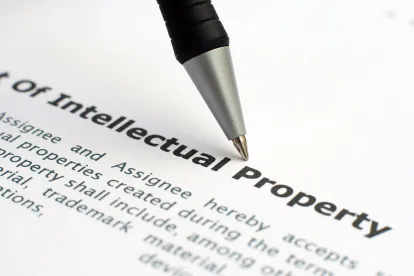In its Final Written Decision, the Board found the challenged claims of the ’634 patent unpatentable. The ’634 patent “describes a hybrid vehicle with an internal combustion engine, an electric motor, and a battery bank, all controlled by a microprocessor that controls the direction of torque transfer between the engine, motor, and drive wheels of the vehicle.”
The Board first addressed claim construction under the broadest reasonable construction in light of the specification. For the claim term “road load” or “RL,” Petitioner proposed a construction that Patent Owner agreed with and “appears to comport with the specification.” Thus, the Board construed the term to mean “the amount of instantaneous torque required to propel the vehicle, be it positive or negative.” For the claim term “setpoint” or “SP,” the Board recognized that the express claim language “suggests that ‘setpoint’ is not just any value, but a value that—per the surrounding claim language—equates to ‘torque.’” Patent Owner, “on the other hand, argues that ‘setpoint’ is synonymous with a ‘transition’ point, not a torque value.” But while “[Patent Owner] is correct that sometimes the specification describes the setpoint in terms of a ‘transition point’ . . . , the claim language itself makes clear that setpoint relates simply to a torque value, without requiring that it be a transition point.” Thus, the Board concluded that it “will not import into the meaning of ‘setpoint’ an extraneous limitation that is supported by neither the claim language nor the specification” and construed the terms as a “predetermined torque value that may or may not be reset.”
The Board turned to the patentability challenges, beginning with anticipation by, and obviousness over, Severisky. The Board found the disputed “setpoint” limitation met:
With respect to the claimed “setpoint” for achieving such efficiency, Severinsky teaches that the microprocessor runs the engine “only in the near vicinity of its most efficient operational point, that is, such that it produces 60–90% of its maximum torque whenever operated.” Id. at 20:63–66 (emphasis added). [Petitioner’s] declarant, Dr. Gregory Davis, testifies that a skilled artisan would have understood the lower limit of Severinsky’s range, i.e., 60% of maximum torque, to be a “setpoint” for efficient operation of the engine. Ex. 1107 ¶ 208. Dr. Davis further testifies that Severinsky’s lower limit of 60% is “substantially less than the MTO” of the engine, thereby meeting the language of claims 161 and 215. Id. ¶¶ 231–232. Crediting the testimony of Dr. Davis, we are persuaded that Severinsky discloses, or at the very least suggests, the “setpoint” limitations of claims 161 and 215. See id. ¶¶ 183–212, 223–232, 323–326.
The Board did not find Patent Owner’s arguments persuasive, instead noting that the “similarity of those descriptions provides ample support for finding that Severinsky teaches an engine control strategy that depends on the load, or torque, required to propel the vehicle, as called for by the claims.” The Board recognized that “torque and speed are not mutually exclusive concepts” and rejected Patent Owner’s attempt “to hold Severinsky to a different standard that it holds the claimed invention.” As such, the Board rejected “[Patent Owner’s] arguments that criticize Severinsky’s references to ‘speed,’ when the ’634 patent itself recognizes that ‘speed’ plays a role in a road load-responsive hybrid control strategy.” Similarly, “[Patent Owner] also faults Severinsky for disclosing that ‘the microprocessor receives inputs from the driver.’” “But, once again, [Patent Owner] fails to recognize that the claims at issue expressly call for receiving inputs from the driver as part of the engine control strategy.” In the end, the Board was convinced that “Severinsky discloses, and at the very least suggests, each and every limitation” of the challenged claims.
The Board next addressed obviousness over Severinsky and Frank. The Board found that “[w]hen viewed through the eyes of the skilled artisan, Severinsky and Frank evidently teach a time-delay in conjunction with a setpoint for operating the engine in order to reduce undesirable excessive cycling in switching between different operational modes.” “With that background in mind, we credit the testimony of Dr. Davis that a skilled artisan would have been led to incorporate Frank’s time-delay feature with Severinsky’s engine control strategy because both hybrid strategies utilize a threshold, or ‘setpoint,’ for switching the engine on and off.” Thus, the Board found that “Severinsky’s disclosure of a torque-based setpoint for starting and stopping the engine, when combined with Frank’s teaching of a time-delay with an on-off threshold for an engine, would have suggested to a skilled artisan the features of claims 80 and 114.”
The Board lastly addressed obviousness over Tabata. “Based on the close mathematical relationship between power and torque, which was confirmed by both parties’ declarants, [the Board concluded] that a skilled artisan would have viewed Tabata as suggesting the setpoint feature of claim 215.”
In sum, the Board found all challenged claims unpatentable.
Ford Motor Co. v. Paice LLC & The Abell Found. Inc., IPR2014-01416
Paper 26: Final Written Decision
Dated: March 10, 2016
Patent: 7,237,634 B2
Before: Sally C. Medley, Kalyan K. Deshpande, and Carl M. DeFranco
Written by: DeFranco
Related proceedings: IPR2014-00904; Paice, LLC v. Ford Motor Co., No. 14-492 (D. Md.); Paice LLC v. Hyundai Motor Co., 12-499 (D. Md.); IPR2014-01415



 />i
/>i
